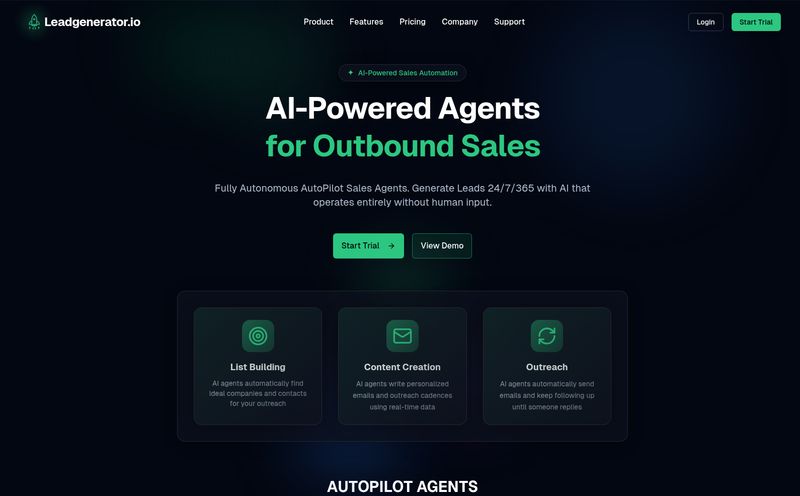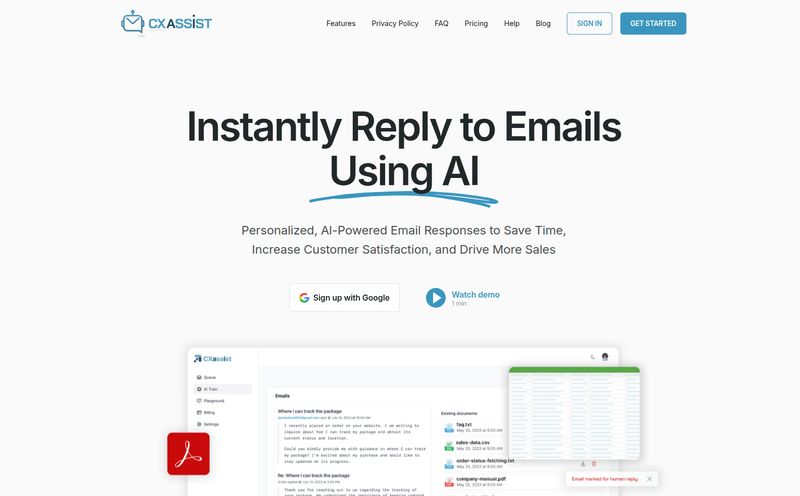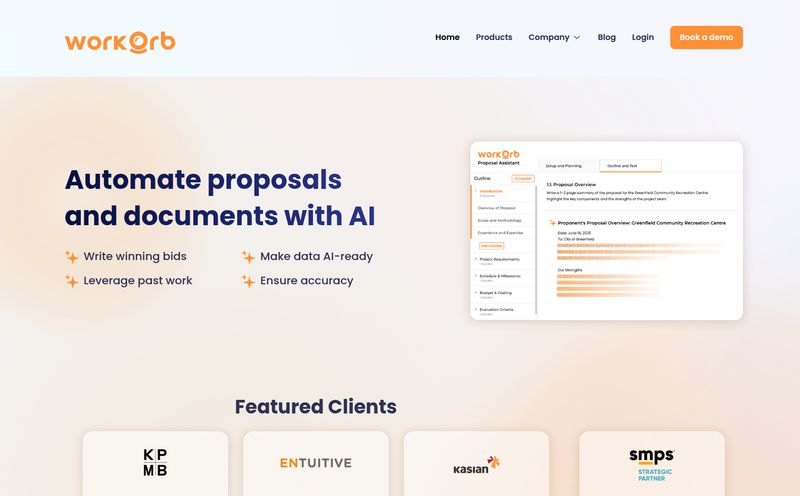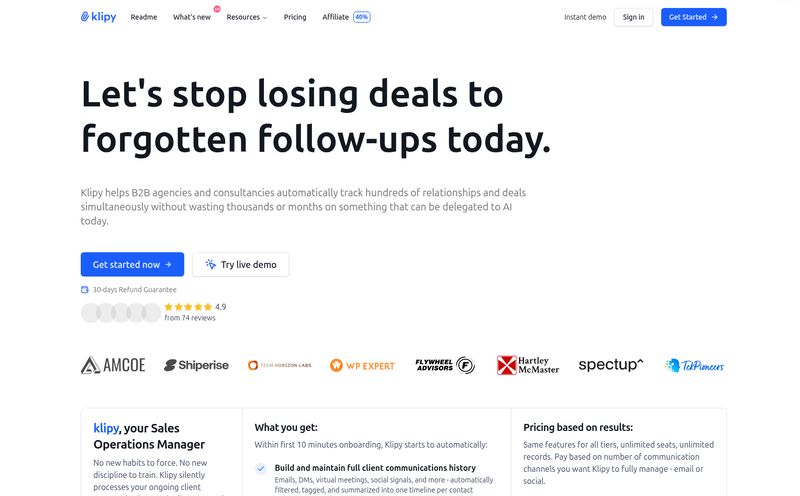If I see one more LinkedIn post declaring “cold email is dead,” I might just lose it. It's the marketing equivalent of a teenager discovering a band from the 90s and acting like they unearthed a lost civilization. The truth is, outreach isn't dead. It's just... exhausting. The endless prospecting, the crafting of emails that you hope sound personal but probably don’t, the abysmal response rates. It's a numbers game that can burn out even the most caffeinated sales development rep (SDR).
For years, we've been trying to solve this. We've built complex sequences in a dozen different apps, A/B tested subject lines into oblivion, and bought lead lists that were probably resold more times than a 2008 Toyota Corolla. The grind is real. And it's into this chaotic world that tools like PipeLime step, promising a better way. They dangle the carrot of AI-powered automation, not just as a tool, but as a fundamental shift in how we approach sales.
But I’ve been in this game long enough to be skeptical of shiny new objects. So, I decided to take a proper look at PipeLime. Is it just another cog in the machine, or is it the whole darn engine? Let's get into it.
First Off, What Is PipeLime, Really?
On the surface, PipeLime calls itself an AI sales funnel automation platform. A mouthful, I know. Think of it less like a simple email blaster and more like a tireless, data-driven intern for your sales team. Its core mission is to find high-quality leads for you, and then intelligently nurture them through your sales funnel, all on autopilot. The big idea is to move away from the 'spray and pray' method and instead, contact people with a personalized message right when they’re actually showing interest.
It’s a bold claim. We've all received those horribly automated emails. You know the ones: “Hi [Fname], I saw your company [Company_Name] is in the [Industry] sector and thought you’d be interested in…” It’s like getting a birthday card from your dentist. You know it’s automated, and it feels completely impersonal. PipeLime says it can do better. A lot better.
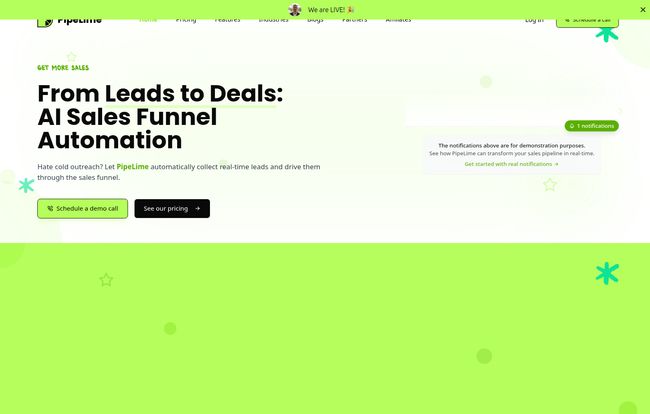
Visit PipeLime
Breaking Down the PipeLime Toolkit
So how does it propose to do all this? It’s not just one single feature, but a combination of processes that work together. It’s the difference between having a hammer and having a full-blown workshop.
AI-Powered Lead Generation That Doesn't Suck
This is where it all begins. Instead of you scraping LinkedIn for hours, PipeLime’s AI goes out and finds potential customers based on the criteria you set. But here's the part that got my attention: it focuses on finding the actual decision-makers and, more importantly, it provides verified contact details. Anyone who has spent a day dealing with bounced emails knows this is huge. It’s like having a bouncer at the door of your sales funnel, making sure only the right people get in. This alone saves a ton of wasted time and effort.
The Magic of Sales Automation and Nurturing
Finding the lead is only step one. The real slog is the follow-up. PipeLime automates this entire sequence. But it's not just a dumb, time-based drip campaign. It claims to monitor for engagement signals, nurturing leads with timely follow-ups and information. The goal is to keep your brand top-of-mind without being annoying, so when the lead is finally ready to have a conversation, you're the first one they think of. It's a delicate dance, and having an AI choreographer is an intriguing prospect.
Personalization That Tries to Feel Personal
This is the make-or-break feature for any outreach tool. PipeLime uses AI to craft personalized email outreach. It goes beyond just slotting in a name and company. The system analyzes data points to make the outreach feel more relevant and, well, human. I'm still a firm believer that the best personalization comes from genuine human research, but if an AI can get you 80% of the way there and handle the volume, that’s a massive win for scalability.
The Good, The Bad, and The Budget
Alright, no tool is perfect. Let's get down to the brass tacks. I've seen enough platforms to know that the marketing page and the real-world experience can be two different things.
What I genuinely like is the all-in-one nature of the platform. The idea of replacing three or four different subscriptions (a lead scraper, a verifier, an outreach tool) with one is very appealing. The focus on verified, decision-maker contacts is a strong selling point that directly addresses a major industry pain point. For a business of any size, scaling up your outreach without scaling up your headcount is the dream, and PipeLime is built squarely on that premise.
However, let's pump the brakes for a moment. One thing that’s clear is this operates on a credit-based system for leads and outreach. This means your monthly subscription is just the entry fee; your actual cost will depend on your usage. It's not necessarily a bad thing—it's a pay-for-what-you-use model—but you need to be aware of it. Secondly, this isn't a magic wand. The effectiveness of the AI is going to be heavily dependent on how well you set it up. Garbage in, garbage out. You need a clear idea of your ideal customer profile to point the AI in the right direction. It's a powerful tool, not a replacement for strategy.
Let's Talk Money: PipeLime's Pricing Plans
Price is always a major factor, so let's see what we're working with. PipeLime keeps it pretty simple with two main tiers.
| Plan | Price | Best For | Key Features |
|---|---|---|---|
| Pro Plan | $69 / month | Startups and growing businesses | 1,000 monthly leads, 3 team members, 10,000 emails, all core AI features. No CRM integration. |
| Enterprise Plan | Custom Pricing | Established teams and large companies | Custom leads, unlimited users, unlimited emails, custom AI training, and full CRM integration. |
In my opinion, the $69 Pro Plan is pretty competitive. If you consider the cost of a good lead database and an email automation tool, you’re likely already paying more than that. The 1,000 leads per month is a solid starting point for a small team. The biggest catch? The lack of CRM integration on this tier. For teams that live and die by their Salesforce or HubSpot, that could be a deal-breaker and push them towards the Enterprise plan.
The Enterprise Plan is for the big players. If you need to plug this directly into your existing sales stack and require unlimited scale, this is your only option. The custom AI training is also a fascinating addition, suggesting you can really refine the model to your specific niche.
My Final Take: Is PipeLime Worth Your Time and Money?
So, here’s my final thought. PipeLime isn't snake oil. It's a serious contender in the sales automation space that seems to understand the real-world problems that sales and marketing teams face every single day. It’s designed to take the most repetitive, soul-crushing parts of prospecting and outreach and hand them over to an AI that doesn’t need coffee breaks.
If you're a solopreneur or a small agency drowning in manual tasks, the Pro Plan looks like a fantastic investment to reclaim your time and focus on closing deals instead of just finding them. If you're a larger organization, the potential for scale with the Enterprise plan is obvious, especially with the promise of CRM integration.
But remember, it’s a tool. It won't invent your sales strategy for you. You still need to know who you're selling to and what your value proposition is. What PipeLime offers is a powerful, scalable way to execute that strategy. And in a world where time is our most valuable asset, that’s a pretty compelling offer.
Frequently Asked Questions about PipeLime
Does PipeLime completely replace my sales team?
Not at all. Think of it as a force multiplier. It automates the top-of-funnel drudgery—prospecting, initial outreach, and follow-up—freeing up your human salespeople to do what they do best: build relationships and close deals with warm, qualified leads.
How does PipeLime verify contact details?
While they don't share their exact secret sauce, platforms like this typically use a combination of real-time SMTP checks, database cross-referencing, and social profile validation to ensure the email addresses and contact info are accurate and up-to-date, drastically reducing bounce rates.
Is the Pro Plan enough for a small business?
For most small businesses, yes. With 1,000 verified leads and 10,000 emails per month, it provides a substantial amount of outreach capacity. The main consideration is whether you can live without direct CRM integration. If your process relies heavily on it, you may need to consider the Enterprise plan or use a third-party connector like Zapier, if possible.
How is this different from a tool like Mailchimp or ConvertKit?
Those are primarily email marketing platforms designed for nurturing an existing list of subscribers who have opted in. PipeLime is a sales engagement platform focused on cold outreach and lead generation. It's designed to find new potential customers who don't know you yet and warm them up, a very different function.
Can I really trust an AI to write my outreach emails?
Trust but verify. The AI is there to create a solid, personalized first draft at scale. Best practice is always to review and refine the templates the AI generates to ensure they perfectly match your brand's voice and tone. It handles the 80% so you can perfect the final 20%.
Conclusion
The debate over sales tactics will rage on, but one thing is certain: automation and intelligence are the future. Tools like PipeLime are at the forefront, trying to solve the age-old problem of connecting with the right people at the right time. By shifting the focus from manual labor to smart automation, it allows businesses to spend less time digging for gold and more time counting it. And that’s a shift I think we can all get behind.
